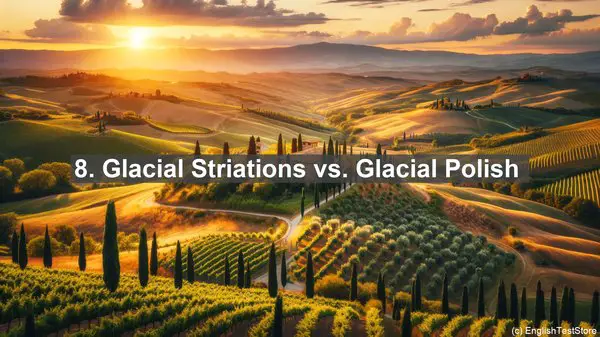Introduction
Welcome to another exciting lesson in glacial geology. Today, we’ll be exploring the world of words, specifically, the ones that often cause confusion. Understanding these terms is crucial for a solid foundation in this field. So, let’s dive in!
1. Glacier vs. Iceberg
While both are made of ice, glaciers are massive bodies of ice that form on land, while icebergs are large chunks of ice that float in water. Think of glaciers as rivers of ice, and icebergs as floating ice mountains.
2. Moraine vs. Esker
Moraines are ridges or mounds of sediment deposited by glaciers, while eskers are long, winding ridges of sand and gravel formed by meltwater streams beneath glaciers. So, moraines are like frozen hills, and eskers are like frozen rivers.
3. Cirque vs. Arete
Cirques are bowl-shaped depressions carved by glaciers, while aretes are sharp, narrow ridges that form between two cirques. Picture cirques as scooped-out basins, and aretes as the sharp edges between them.
4. Firn vs. Neve
Firn is partially compacted snow that’s not yet turned into ice, while neve is a type of firn that’s undergone more compaction. Think of firn as a fluffy, loose snow, and neve as a more compacted, denser version.

5. Till vs. Outwash
Till is unsorted sediment deposited directly by glaciers, while outwash is sorted sediment carried and deposited by meltwater streams. So, till is like a jumbled mix, and outwash is like a well-sorted, organized collection.
6. Kame vs. Kettle
Kames are small, cone-shaped mounds of sediment deposited by meltwater, while kettles are depressions formed when blocks of ice left by glaciers melt. Imagine kames as small hills, and kettles as the resulting hollows.
7. Drift vs. Erratic
Drift refers to all the sediment deposited by glaciers, while erratics are large boulders that have been transported and deposited by glaciers. So, drift is a general term, and erratics are the noticeable, often out-of-place rocks.
8. Glacial Striations vs. Glacial Polish
Glacial striations are scratches or grooves on bedrock caused by the movement of glaciers, while glacial polish is a smooth, shiny surface on bedrock due to abrasion by glacial ice. Striations are like visible marks, and polish is a smoother, more polished appearance.

9. Plucking vs. Abrasion
Plucking is the process of glaciers picking up and carrying rock fragments, while abrasion is the wearing down of bedrock by these rock fragments. So, plucking is the lifting, and abrasion is the grinding and smoothing.
10. Glacial Flour vs. Glacial Meltwater
Glacial flour is fine, powdery sediment created by the grinding of rocks by glaciers, while glacial meltwater is the water resulting from the melting of glaciers. Glacial flour is like a fine powder, and glacial meltwater is the resulting liquid.
